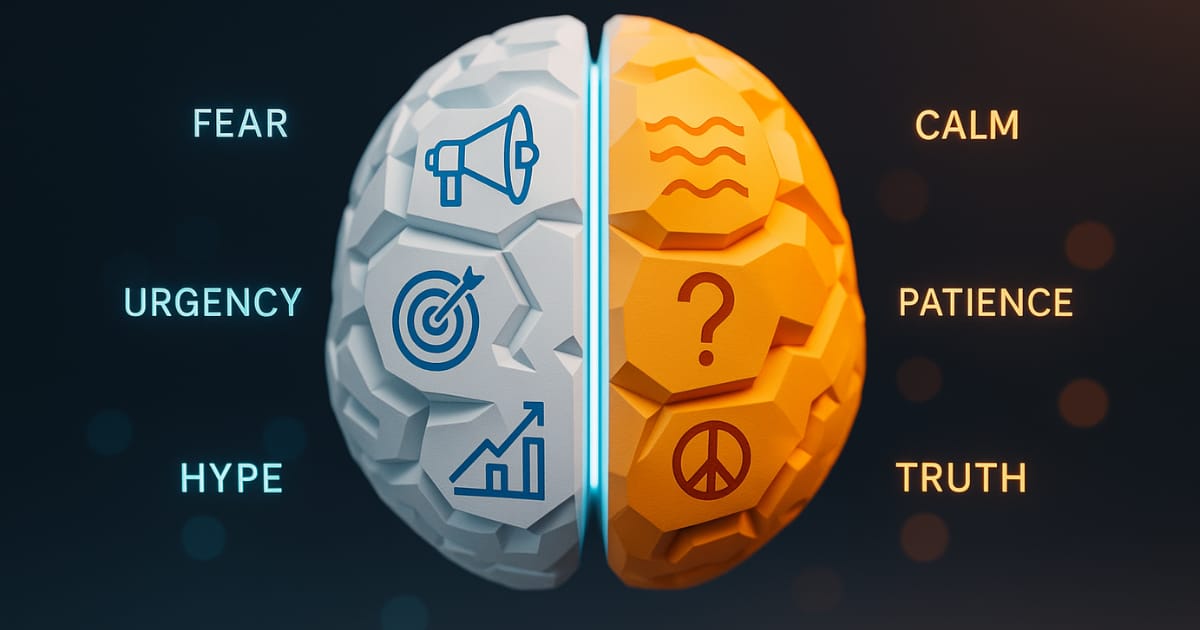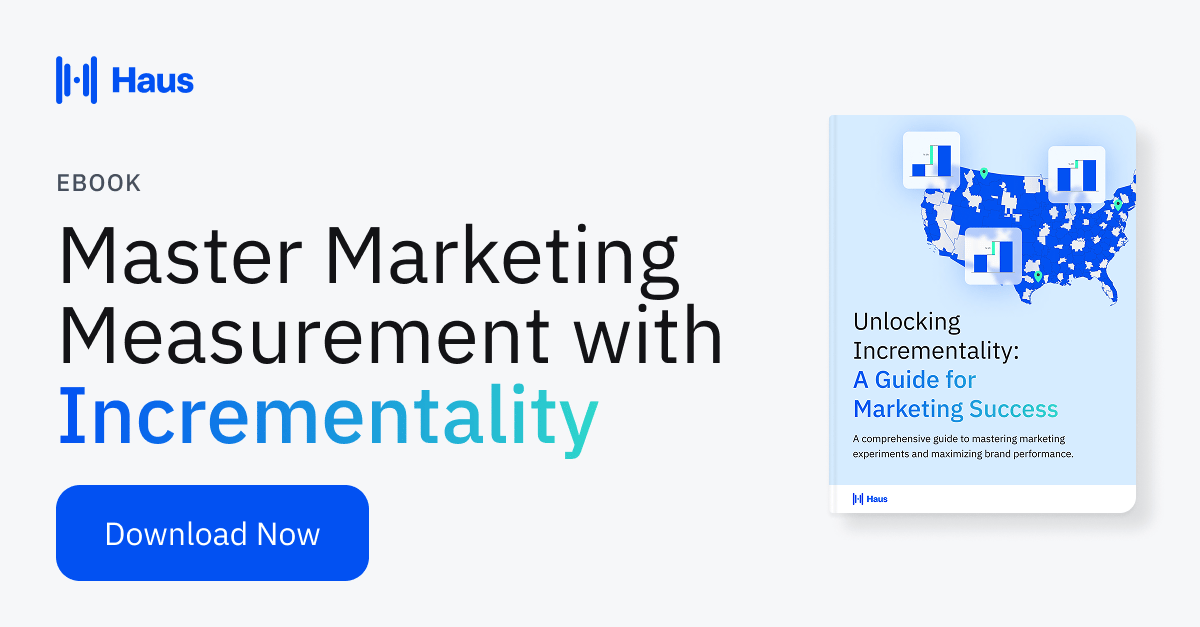{{rh_onboarding_line}}
Welcome to AI Marketing Playbook!
You've shipped ads this week. Tested headlines, tweaked CTAs, A/B'd button colors. But here's the question nobody asks: What if the emotion you're selling is backwards?
Most marketers write from intuition; fear for insurance, excitement for travel, trust for finance. But the best campaigns flip the script. They sell peace through adventure. Confidence through vulnerability. This Saturday, we're testing whether your next campaign should run opposite to instinct.
More than 34,000 AI marketers are reading this newsletter this Saturday!
🎯 Mission Objective
Parameter | Spec |
|---|---|
Goal | Identify if your product/message performs better with inverted emotional framing |
Time | 10 minutes |
Difficulty | ⚡ Basic |
Outcome | 2 headline variations that challenge your default emotional positioning |
In Partnership With Haus: Measure your marketing campaign effectively.
Unlocking Incrementality: A Guide for Marketing Success
In today's chaotic marketing landscape, brands need a reliable way to measure what works and what doesn't. Incrementality is the answer.
This free ebook, “Unlocking Incrementality: A Guide for Marketing Success,” will teach you everything you need to know about incrementality, from the basics to advanced strategies.
Inside, you’ll learn:
What incrementality is and why it matters: Understand how it differs from traditional attribution and why it’s essential for modern marketers.
How to measure and test incrementality: Explore proven methods like geo experiments and conversion lift testing.
How to optimize your marketing spend: Identify your most impactful channels and allocate your budget with confidence.
Real-world success stories from top brands: See how leading brands use incrementality to drive growth and improve ROI.
✨ Want to advertise in AIM?
Reach engaged 30k+ marketers with 80% open rates
Trusted by marketers at companies like GoDaddy, WPP Media, Sky, Adidas & more
The Play
AI writes fast. But does it write memorably?
Here's the challenge: most products get locked into one emotional lane. Fitness = motivation. Software = efficiency. Coffee = energy. But what if your audience is exhausted by that predictability? What if the gym-goer doesn't need more motivation? They need permission to rest. This experiment forces Claude to break your product's emotional autopilot and find the angle your competitors are ignoring.
Step-by-Step Play
Step 1: Define Your Default Emotion
Go to Claude.ai and copy this prompt:
I'm marketing [YOUR PRODUCT]. The default emotion most competitors use is [EMOTION: e.g., excitement, fear, trust, urgency]. What's the opposite emotional frame that could work here? Give me 3 contrarian angles that flip the expected feeling.
What to expect: Claude will suggest emotional inversions like "calm instead of excitement" or "curiosity instead of urgency." Pick the one that feels most unexpected.
Step 2: Generate Inverted Headlines
Take the strongest contrarian angle from Step 1. Now generate headlines that embody this flip:
Using the [CONTRARIAN EMOTION] angle, write 5 headlines for [YOUR PRODUCT] that feel completely different from typical [INDUSTRY] messaging. Make them concrete, not abstract.
What to expect: Headlines that break category conventions. Instead of "Crush Your Fitness Goals," you might get "The Workout That Lets You Sleep In."

Step 3: Run the A/B Psychology Test
Pick your best inverted headline and compare it against your current approach:
Compare these two headlines for [YOUR PRODUCT]: A) [Your current headline], B) [Your inverted headline]. Which one would perform better with [YOUR TARGET AUDIENCE] and why? Consider cognitive biases like novelty effect, pattern interruption, and emotional contrast.
What to expect: A breakdown of which psychological triggers each headline activates, and which audience segments respond to contrast vs. comfort.
Step 4: Build Full Ad Variations
Now test if the flip works in complete messaging:
Write two full ad variations (headline + 50-word body copy) for [YOUR PRODUCT]: Version A: Standard [DEFAULT EMOTION] approach Version B: Inverted [CONTRARIAN EMOTION] approach Then tell me which one would likely drive higher engagement and why.
What to expect: Two complete ads you can screenshot, mock up, or test in real campaigns. Pay attention to which one feels more memorable.
In Partnership With Marketing Millennials: Get winning marketing ideas for free.
Marketing ideas for marketers who hate boring
The best marketing ideas come from marketers who live it. That’s what The Marketing Millennials delivers: real insights, fresh takes, and no fluff. Written by Daniel Murray, a marketer who knows what works, this newsletter cuts through the noise so you can stop guessing and start winning. Subscribe and level up your marketing game.
Behind the Tech
Why this works: Emotional pattern interruption activates deeper processing.
When audiences see the same emotional frame repeatedly (fear in insurance, excitement in travel), their brains process it on autopilot: fast, shallow, forgettable. But when you flip the expected emotion, you force deliberate attention.
The brain has to slow down and reconcile the mismatch. That cognitive friction creates memory encoding. You're not just writing an ad, you're creating a moment where the pattern breaks and the message lands.
Field Tip
The Expectation Arbitrage Principle: Your biggest creative opportunity lives where audience expectation and message delivery diverge. Don't ask "What emotion fits my product?" Ask "What emotion does my audience expect, and what happens if I deliver the opposite?"
Prompt Playground
Reverse Engineer Competitors:
Analyze the emotional positioning of [COMPETITOR'S RECENT AD]. What emotion are they using? Now give me 3 ways to attack the same audience with the opposite emotion.
Emotion Spectrum Map:
For [YOUR PRODUCT], map out the full emotional spectrum from fear to joy. Which emotions are oversaturated in my industry? Which are under-exploited?
The Seasonal Flip:
How would I emotionally reframe [YOUR PRODUCT] for someone experiencing [SPECIFIC LIFE MOMENT: e.g., burnout, promotion, new parent]? What emotion would break through?
The Contrarian Headline Generator:
Generate 10 headlines for [YOUR PRODUCT] that would make my competitors say, "That's not how you're supposed to market this." Focus on emotional inversions.
Challenge Within the Challenge
Once you've found your contrarian angle, test it against fatigue. Run this prompt:
If I used [YOUR INVERTED EMOTION] in every piece of marketing for 6 months, would it become the new default? How would I keep this angle fresh without falling back into category norms?
The best emotional flips don't just surprise once; they create a new positioning you can own. Make sure yours has legs.
Playbook Debrief
The lesson: Emotion isn't about what your product is, it's about what your audience expects to feel. The marketers who win aren't the ones who match the category. They're the ones who know when to break it. You just tested whether your message should zig when everyone else zags.
That's not a gimmick. That's positioning.
👋 Subscribe to Our Newsletter
Subscribe to get your weekly winning guides on AI Marketing.
Questions? Just write a comment below. I read all the comments and respond to them.



